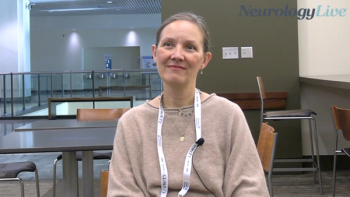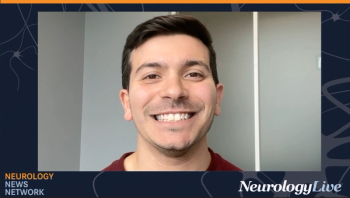
- April 2022
- Volume 5
- Issue 2
PDE10A Inhibition in Tourette Syndrome
Despite progress in the understanding of Tourette syndrome and similar disorders, no clear cause of TS has been identified, nor are there treatment options that completely eliminate symptoms.
TOURETTE SYNDROME (TS) IS A common neuropsychiatric disorder that affects approximately 0.3% to 1% of the global population and is characterized by multiple chronic tics (eg, involuntary movements and uncontrollable vocalizations).1,2 TS begins in childhood or adolescence and exhibits a pronounced bias toward males.1-3 Dysfunction of frontostriatal circuits is the common neurobiological basis for several neuropsychiatric disorders, including TS.4 Neuroimaging and neuropathology studies implicate the major connections of the ganglia in TS.5 Particularly, overactivation of habitual actions or failure of automatic inhibition appear to contribute to TS.5 TS propensity has also been associated with interactions between environmental factors (eg, mother smoked during pregnancy, pregnancy complications, low birth weight, and infections during childhood) and genetic perturbations.3 Probable risk genes have been identified (eg, CELSR3, WWC1, OPA1, NIPBL, FN1, and FBN2).2 CELSR3 and WWC1 encode proteins involved in cell polarity, suggesting a role for cell polarity defects in the pathogenesis of TS.2 TS is often accompanied by other psychiatric conditions such as depression,5 obsessive-compulsive disorder (OCD), and attention-deficit/hyperactivity disorder2; in fact, there is significant overlap of de novo damaging sequence variants between patient populations with TS and OCD consistent with a subset of genetic risk loci being shared between these conditions.2 Yet no clear cause of TS has been identified, nor are there treatment options that completely eliminate symptoms.2,3
Strategies to treat neuropsychiatric disorders (eg, pharmacotherapy, gene therapy, immunotherapy) are urgently needed because the symptoms and discomforts accompanying TS have a large impact on patients’ quality of life.6 TS is traditionally treated with antipsychotics or behavioral interventions, although both have limited efficacy and the former is associated with significant motor and metabolic adverse effects (AEs).1,2,4,7 Deep-brain stimulation (DBS) of the globus pallidus (GPi) is another intervention option that has shown efficacy in controlling TS tics and comorbidities.5 A double-blind, randomized crossover trial included 14 patients (11 male; mean age, 35.57 years; SD, 15.68 years) with severe TS who were actively using psychiatric medications.5 The study also included 8 healthy volunteers (5 female; mean age, 33.13 years; SD, 6.79 years) who did not exhibit any neurological conditions, psychiatric or physical illnesses, or did not have a history of head injury or alcohol or drug abuse.5 Patients with TS were tested on the stop signal task prior to surgery and again upon completion of the trial (with the GPi-DBS activated), whereas healthy controls did not undergo surgery and were tested only once.5 Unfortunately, reaction time measures of inhibition were not significantly altered by GPi-DBS surgery, although these results may not be representative because of sample characteristics (ie, small sample size, age, comorbidities, and type of inhibitory task).5
TS can be triggered by abnormal metabolism of dopamine in the brain3; this neurotransmitter plays a central role in regulation of motor and cognitive functions.6,8,9 The enzyme phosphodiesterase 10A (PDE10A) partially regulates dopamine neurotransmission8; thus, PDE10A has received attention as an attractive target for antipsychotic drugs.4,6,10 PDE10A has very limited distribution and is mainly expressed in medium spiny neurons (MSNs) of the striatum and substantia nigra (FIGURE4).7,9-11 Synergistic dopamine type D1 and D2 receptors are also expressed on striatal MSNs.4 PDE10A acts postsynaptically on dopamine signaling by controlling the availability of the second messengers cyclic adenosine monophosphate and cyclic guanosine monophosphate,4,8-11 which in turn dictates neuronal cell functions that, when dysregulated, can lead to cognitive, motor, or psychiatric disturbances.4
Inactivation of PDE10A enhances the effect of dopamine D1 receptor activation in the striatonigral (direct) pathway and counteracts the inhibitory effect of D2 receptor signaling in the striatopallidal (indirect) pathway.4,10 PDE10A inhibitors have been tested for safety and tolerability in patients with Huntington disease (NCT02197130) and schizophrenia (NCT01568203, NCT02019329, NCT02477020).4,9 In 2021, Noema Pharma in-licensed the PDE10A inhibitor NOE-105 from Roche12,13 for a clinical study of this drug candidate in reducing the involuntary tics of TS.14 NOE-105 was previously found to be safe in adults at repeated doses of up to 30 mg per day.1,7 Importantly, NOE-105 is not associated with the motor and metabolic AEs typical of second-generation antipsychotics (eg, insulin resistance and type 2 diabetes).7,15 The NOE-105 12-week, multicenter, interventional, dose-ranging, open-label phase 2a Allevia trial (ACTRN1262100031987516) was initiated in 2021.1,7 The Allevia trial recruited adult men (aged 18-50 years) who have received a diagnosis of TS and who require drug therapy yet experience lack of benefit from current therapies.16 Exclusion criteria include a current diagnosis of bipolar disorder, schizophrenia, or major depressive disorder (MDD); secondary tic symptoms accompanied by comorbidities (ie, Huntington chorea, neuroacanthocytosis, mental retardation, or autism); history of severe traumatic brain injury or stroke; and presence of accompanying unstable medical conditions.7,16 Doses begin at 5.0 mg per week but may be increased by 2.5 mg per week up to 15.0 mg based on clinical evaluation and tolerability.7,16 The trial’s primary outcomes are being evaluated with the Tourette Syndrome Clinical Global Impression of Change (TS-CGI-C), which is used to assess patients’ perceptions of symptom improvement.7,16 At week 12 or upon discontinuation of the trial, patients are also assessed for changes in tic symptom severity with the Yale Global Tic Severity Scale.7,16 Secondary end points include analyses of blood samples, electrocardiograms and vital signs, and the presence of AEs.7,13,16 Results from the Allevia trial are expected in the first half of 2022.1,7
PDE10A is a potential therapeutic target for the treatment of several neurodegenerative disorders; thus, medicinal chemists have been focused on developing potent PDE10A inhibitors with minimal AEs.9 In preclinical computational biology approaches to drug design, a receptor-based pharmacophore model can refine the protein structure and active site of PDE10A and use molecular docking and molecular dynamics simulations to predict ligand binding affinity.9 Pharmacophore-based screening of existing databases was performed to identify potential PDE10A inhibitors with matching pharmacophoric features, then filtered to retain only compounds with drug-likeness properties and central nervous system (CNS) activity (relatively small, moderately lipophilic, small polar surface area, and blood/brain partition coefficient of 0-1.2 and the value of CNS in the range of 0-2).9 Zinc42657360 from the zinc database was 1 of 2 compounds with the highest affinity to PDE10A from the docking simulations. In the PDE-Glo phosphodiesterase assay, Zinc42657360 indeed exhibited significant inhibitory activity of 1.60 mM against PDE10A.9 Zinc42657360 could thus be further developed into potent analogues with improved affinity, for use as a PDE10A inhibitor.9
Currently, no PDE10A inhibitors have been approved as treatments for neurodegenerative disorders, possibly because of the lack of comprehensive research in this area, as well as the observed extrapyramidal AEs.4,9 Animals housed under standard laboratory conditions are not representative test models for the evaluation of cognition-enhancing drugs because of the resulting impoverished brains, which results in false-positive results and lack of translatability to humans.6 There is thus a need for deeper understanding of the complex interactions and cross talk between the direct and indirect pathways, and their involvement in TS pathology.6 Moreover, better understanding of the subcellular localization of PDEs will aid in maximizing the specificity of therapeutics.4,6 Notably, current PDE inhibitors exhibit off-target effects on inflammatory and apoptotic cascades and can increase blood flow and glucose metabolism.6 Structure-based drug design promises to improve PDE10A selectivity of drug candidates, which will benefit patients by minimizing adverse effects.6
For correspondence: [email protected]
New York Genome Center, New York, NY
REFERENCES
1. Noema Pharma initiates phase 2a Allevia study of PDE10A inhibitor NOE-105 in Tourette syndrome. News release. Noema Pharma. August 5, 2021. Accessed February 20, 2022. https://www.biospace.com/article/releases/ noema-pharma-initiates-phase-2a-allevia-study-of-pde10a-inhibitor-noe-105-in-tourette-syndrome/
2. Wang S, Mandell JD, Kumar Y, et al. De novo sequence and copy number variants are strongly associated with Tourette disorder and Implicate cell polarity in pathogenesis. Cell Rep. 2018;24(13):3441-3454.e12. doi:10.1016/j.celrep.2018.08.082
3. Risk factors and causes for Tourette syndrome. CDC. October 29, 2018. Accessed February 24, 2022. https:// www.cdc.gov/ncbddd/tourette/riskfactors.html
4. Heckman PRA, van Duinen MA, Bollen EPP, et al. Phosphodiesterase inhibition and regulation of dopaminergic frontal and striatal functioning: clinical implications. Int J Neuropsychopharmacol. 2016;19(10):pyw030. doi:10.1093/ijnp/pyw030
5. Morreale F, Kefalopoulou Z, Zrinzo L, et al. Inhibitory control on a stop signal task in Tourette syndrome before and after deep brain stimulation of the internal segment of the globus pallidus. Brain Sci. 2021;11(4):461. doi:10.3390/brainsci11040461
6. Heckman PRA, Blokland A, Bollen EPP, Prickaerts J. Phosphodiesterase inhibition and modulation of corticostriatal and hippocampal circuits: clinical overview and translational considerations. Neurosci Biobehav Rev. 2018;87:233-254. doi:10.1016/j.neubiorev.2018.02.007
7. Reinhard A. PDE10A inhibitor being evaluated in Tourette syndrome phase 2a study. NeurologyLive®. August 10, 2021. Accessed February 20, 2022. https://www.neurologylive.com/view/ pde10a-inhibitor-evaluated-tourette-syndrome-phase-2a-study
8. Nishi A, Kuroiwa M, Miller DB, et al. Distinct roles of PDE4 and PDE10A in the regulation of cAMP/PKA signaling in the striatum. J Neurosci. 2008;28(42):10460-10471. doi:10.1523/JNEUROSCI.2518-08.2008
9. Al-Nema M, Gaurav A, Lee VS, et al. Structure-based discovery and bio-evaluation of a cyclopenta[4,5] thieno[2,3-d]pyrimidin-4-one as a phosphodiesterase 10A inhibitor. RSC Adv. 2022;12(3):1576-1591. doi:10.1039/D1RA07649C
10. Persson J, Szalisznyó K, Antoni G, et al. Phosphodiesterase 10A levels are related to striatal function in schizophrenia: a combined positron emission tomography and functional magnetic resonance imaging study. Eur Arch Psychiatry Clin Neurosci. 2020;270(4):451-459. doi:10.1007/s00406-019-01021-0
11. Ooms M, Celen S, De Hoogt R, et al. Striatal phosphodiesterase 10A availability is altered secondary to chronic changes in dopamine neurotransmission. EJNMMI Radiopharm Chem. 2017;1(1):3. doi:10.1186/ s41181-016-0005-5
12. Sheridan S. Noema raises $60M to move Roche assets into orphan CNS indications. BioWorld. December 1, 2020. Accessed March 12, 2022. https://www.bioworld.com/ articles/500798-noema-raises-60m-to-move-roche-assets-into-orphan-cns-indications
13. New treatment option for Tourette syndrome enters phase 2 clinical trial. News release. Startup Ticker. September 8, 2021. Accessed March 12, 2022. https://www.startupticker.ch/en/news/ new-treatment-option-for-tourette-syndrome-enters-phase-2-clinical-trial
14. Tong A. Roche shelved these psychiatry drugs. So its former head of neuro cooked up some new plans — and raised $59M for his startup. Endpoints News. December 1, 2020. Accessed March 12, 2022. https:// endpts.com/roche-didnt-want-these-psychiatry-drugs-so-its-former-head-of-neuro-cooked-up-some-new-plans-and-raised-59m-for-his-startup/
15. Tourette’s syndrome clinical trials. Wesley Medical Research. Accessed March 12, 2022. https://www. wesleyresearch.org.au/our-research/clinical-trials/tourette-syndrome-clinical-trials/
16. ANZCTR registration. Accessed March 12, 2022. https://www.anzctr.org.au/Trial/Registration/TrialReview. aspx?id=380966&showOriginal=true&isReview=true
Articles in this issue
over 3 years ago
Pressing Gaps in Care Exist for Patients With Parkinson Diseaseover 3 years ago
CAP-1002 Builds Momentum in DMD With Phase 3 HOPE-3 Studyover 3 years ago
Boundary Between Chronic and Episodic Migraine Is “in Flux”over 3 years ago
Awareness Empowers Care for Patients With Parkinson DiseaseNewsletter
Keep your finger on the pulse of neurology—subscribe to NeurologyLive for expert interviews, new data, and breakthrough treatment updates.



































